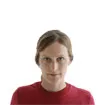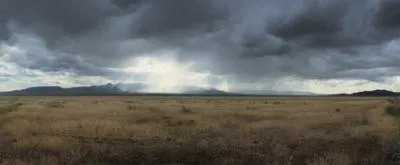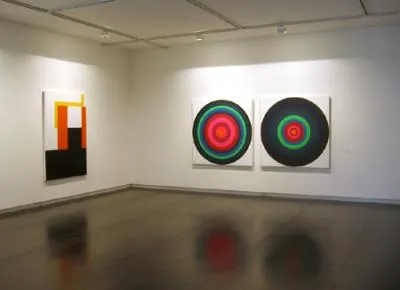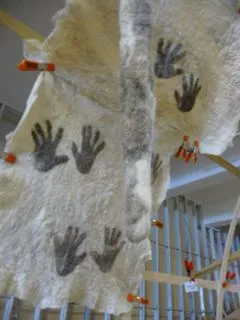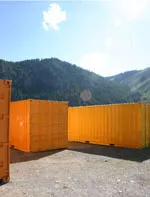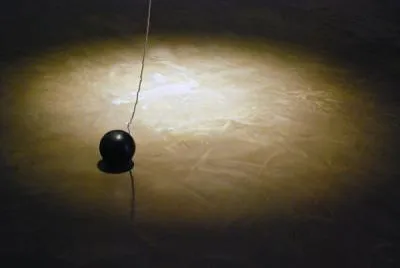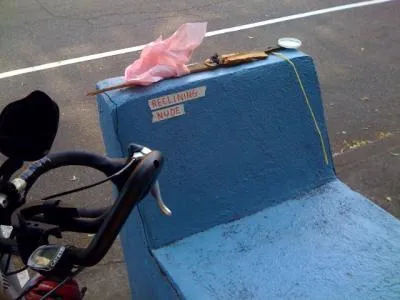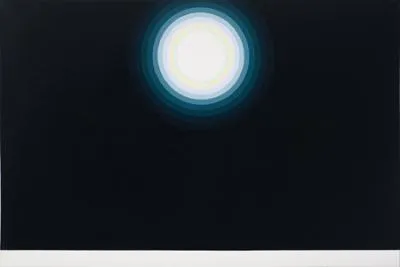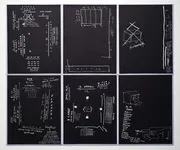“Black Page,” D. E. May’s fifth solo exhibition at this gallery, furthers the artist’s hermetic examination of the material ephemera and vernacular traces of the Pacific Northwest. His new drawings and assemblages consist of serial works on paper housed in reflective transparent document holders installed throughout the gallery in a variety of grid forms. With nearly forty drawings in the exhibition, the room is electric with the raw and refined energy of May’s passionate exploration of spatial forms, language, and storied materials such as weathered cardboard, old notebook paper, and other unidentifiable objects flattened and compressed by life on the streets.
May collects and reuses materials that he affixes to intricate drawings of grids and architectural forms, or uses them as the surfaces for other similar drawings. In Untitled (459), 2009, for instance, a rectangle of sagging, stained-brown “skin” is positioned in the center of a square, vertical grid. It is impossible to discern the precise nature of the material or whether May had a hand in its transformation. This ambiguity, which runs throughout all the work, habitually refocuses the viewer’s attention on the organization and observation of experience. The exhibition might read like an archive, but the system at work is cryptic, private, and self-sustaining.
Most of the works in “Black Page” are either mounted on or incorporate thick black paper. One group, bearing the title of the exhibition, consists of plans, schematics, and notations for the construction of various improbable objects. These pieces are drawn in fat white marker on the black paper and are the humorously erratic unconscious of the exhibition, containing instructions such as ARTIST’S STATEMENT BASED ON THE FILM THE SWIMMER W/ BURT LANCASTER IN WHICH THE ARCHITECTURE ALONG THE HILLSIDE OF SWIMMING POOLS BECOME THE SUBPLOT INSTEAD OF THE BORED HOUSEWIVES. One can imagine each drawing in this extraordinary body of work as a frame from a long-lost documentary or cartoon.
-Stephanie Snyder
